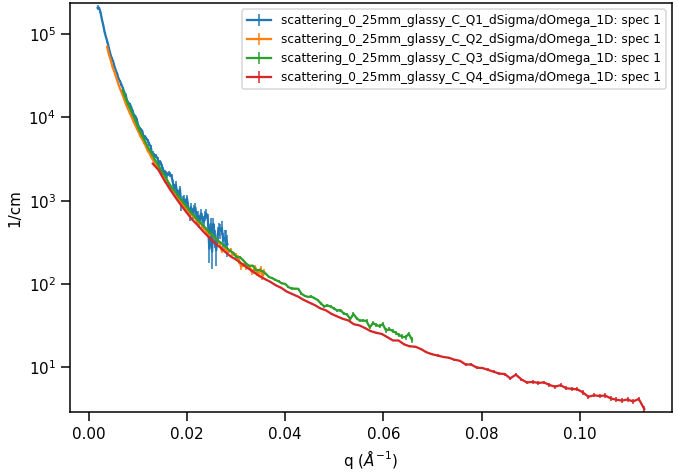Dear all,
For the past few months, I have been developing a Mantid-based data reduction system for the new SANS instrument at Reactor Institute Delft. Thanks again to @jpcstfc for pointing me the right way at the start! The software is almost complete and mostly needs to be verified using reference samples now.
There are two things however that I have not managed to get to work in Mantid that I hoped you could help me with. The first is stitching of 2D workspaces. As we have a 2D detector, it is important that we can reduce our data to dSigma/dOmega maps as function of (Qx,Qy) in addition to the usual 1D reduction. The basic reduction step using the Qxy algorithm for each Q-range separately works fine but I have not managed to stitch these 2D workspaces together. Is there an algorithm for this in Mantid’s library? I suspected there should be an existing way as this is a quite standard operation.
I have managed to get a stitching algorithm, Stitch1DMany, to work for the 1D case. It does not seem to be optimized for this application however and users report difficulties with it and coefficients that are far from unity. It appears this could be related to how it averages values. Overlap areas with very high errors (i.e. due to poor counting statistics) result in poor stitching different from what you would expect from the data, which seems to suggest that a flat average of values is used rather than one that scales as 1/error to make values with high error matter less. Is there an alternative algorithm that scales values like this and preferably optimizes coefficients for all input workspaces at once? More generally, I would be interested to learn which stitching algorithms are used for SANS stitching at other facilities as I didn’t manage to figure this out myself using the mantid repository.
For your reference, the latest version of our reduction code can be found here, it is a Python package built on top of Mantid’s Python interface.
Thank you in advance!
